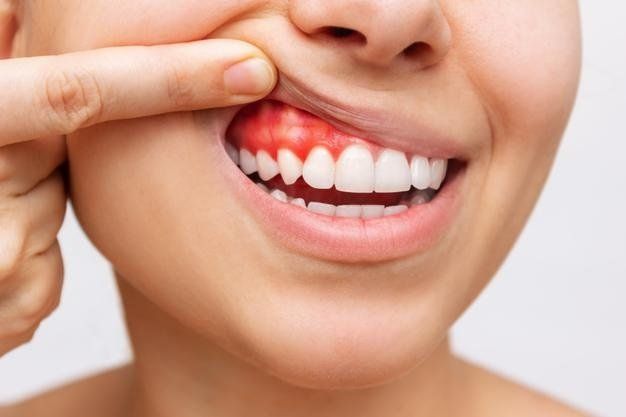Signs of Periodontal Disease & How to Prevent It

The Centers for Disease Control and Prevention (CDC) indicate that 47.2% of people in the U.S. age 30 or over are dealing with some form of periodontal disease. 70.1% of U.S. citizens age 65 and older suffer from gum disease.
A healthy mouth is about more than white teeth and a brilliant smile. Poor oral health can lead to other nefarious health conditions. South Temple Dental can help you if you are noticing signs of periodontal disease.
What Is Periodontal Disease?

Gum disease, periodontitis, and periodontal disease are different names for the same condition: an infection of the soft tissue (gums) caused by bacteria caught in plaque, that sticky film that coats your teeth, tongue, and gums.
The Stages of Periodontal Disease
Periodontal disease is progressive, so the earlier it is treated, the less damage that may occur. The three general stages are:
- Gingivitis : slight swelling and mild bleeding of the gums that can be reversed with attentive and consistent at-home brushing and flossing.

- Periodontal disease : the infection caused by bacteria in the plaque build-up begins to damage the soft tissue fibers of the gums and can advance to the bones. At this stage more intensive home oral health care must occur and professional treatment is often needed.

- Advanced periodontal disease : the prolonged exposure to infection causes severe swelling and deterioration of the gums and bone, resulting in the loosening, shifting, and eventual loss of teeth and bone.

Signs of Periodontal Disease

There are warning signs of periodontal disease that are relatively easy to observe. You should contact your dental professional if you are experiencing:
- Persistent bad breath
- Swollen, red gums
- Painful gums
- Sensitive teeth
- Loose teeth
- Receding gums
Risk Factors

One of the habits that can significantly increase your risk of developing periodontitis is tobacco use. If you smoke or use chewing tobacco, quit as quickly as possible. Other conditions that can increase your risk of gum disease are:
- Age
- Diabetes
- Cardiovascular disease
- Hormonal changes
- Dehydration
- Certain medications
- Various illnesses
Steps to Prevent Periodontal Disease

In just six minutes each day, you can make great strides in reducing and preventing gum disease. Use a soft-bristled brush (preferably an electric toothbrush) to brush each quadrant of your mouth for 30 seconds twice a day (two minutes in the morning, two at night) using fluoride toothpaste. Floss nightly for approximately two minutes to maintain good oral health and prevent gum disease.
Try to avoid certain foods that can be bad for your teeth : sugary sweets like jelly beans and taffy, and sticky starches like white bread and potato chips. These can get stuck in the pockets between teeth and create plaque. Make sure you visit your dentist every 3-6 months for a professional cleaning and exam.
Beyond Your Mouth

We all want to maintain our beautiful smile, but taking care of your teeth and gums is more than just that. It has a far-reaching effect on your overall health. Painful gums and sensitive teeth can make it difficult to eat properly, which can lead to poor nutrition and result in many other health concerns. The Mayo Clinic indicates that periodontal disease may also be linked to conditions such as coronary artery disease, respiratory illness, rheumatoid arthritis, and difficulties controlling blood sugars.
Contact South Temple Dental
Are you worried that you might have periodontal disease? Contact us to set up an appointment and let us take care of you today.
The post Signs of Periodontal Disease & How to Prevent It appeared first on South Temple Dental.


